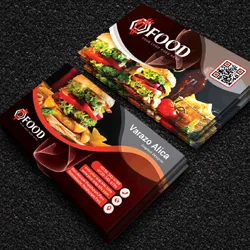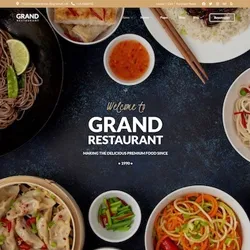Successful restaurant branding sets an eatery apart. It creates memorable ambiance guests want to experience over and over. This article gives those opening a restaurant or updating and rebranding some guidance in understanding restaurant branding and building a solid identity.
Restaurant Branding

Restaurant branding communicates a restaurant’s identity and personality. It expresses the mission and values of the restaurant and influences the ambiance and concept. Well-thought-out brands create emotional connections with customers.
The brand must be palpable when entering the restaurant and remain cohesive throughout the marketing efforts, type of food, and service style. Quality restaurant branding increases loyalty and attracts new customers drawn to your restaurant brand ideas.
Ten Restaurant Branding Elements
When creating a cohesive and memorable brand, explore these essential components listed below.
1. Concept

Restaurants differ in the type of food, price range, and formality level. The concept also includes the style of service. It may be a food truck, casual fast counter-service spot, pop-up bar, or sit-down restaurant. The idea is the brand in action. It should reflect the brand.
Yelp has seen complaints when a staff member could not point out the vegan choices on a menu. Most employee recommendations are made based on what is popular in the restaurant rather than what a customer likes or dislikes, the beverage that goes best with an order, or the curry with a bread choice. Hiring employees, adept at recommendations like those would be expensive. Deploying a chatbot to do this involves zero downtime.
2. Demographics

Demographics include income level, gender, and age. You may have a target audience of working professionals, couples, families, or some combination. The clientele may be traditional or trendy. They likely have a price point.
The restaurant should meet a need and not saturate similar establishments. Understand the demographics of your location and decide what concept and branding work well there. If you have a specific brand in mind, find a place that responds well to the brand.
3. Mission Statement

A mission statement outlines the restaurant’s foundation, values, and what it hopes to achieve. Provide something customers cannot find elsewhere. A mission statement creates a connection with stakeholders, staff, and customers. When the mission statement is worked out, use it to guide decisions about other brand elements.
4. Restaurant Name

Choosing a name is a crucial part of branding a restaurant. The title should be unique, memorable, and relevant. It should reflect the brand and give customers a sense of the food you serve and what they can expect when they enter the restaurant.
5. Your Logo

A logo is a visual element customers recognize over time. The logo may be straightforward with your initials or name in an expressive font or incorporates a symbol. It should be consistent with the brand by using similar colors and feel. Symbols are not always necessary. A well-chosen font can effectively sum up the feel of a business on the menu, website, signage, and other advertising materials.
6. Your Tagline

A tagline is a catchy, brief statement summing up the features of the mission and brand. They are often seen below a logo on a website or heard on radio ads.
7. The Ambiance

The ambiance is among the most dynamic avenues to express a brand. Customers remember how they felt in a restaurant. Fine-tune every aspect to adhere to the brand and create a comfortable customer experience. Critical components of ambiance include
- Color scheme
- Interior décor
- Lighting
- Menu design
- Music
- Server clothing
- Server composure
- Serving ware and tabletop details
8. Digital Marketing Platforms

Loyal customers and prospective guests check out a restaurant’s website for the menu, hours, and other information about the restaurant. They choose to follow on social media platforms, including Facebook and Instagram. Keep the brand consistent on all media.
The language and tone used, the aesthetic of Instagram photos, and the essence of a website express the brand. Instagram or your website might be the first impression customers have of the restaurant. Keeping an active, professional Instagram or investing in a high-quality website is worth your time.
9. The Food

The food served is another central component of a restaurant’s brand. From the name of a dish to the ingredients used, make every decision parallel with your brand and mission. If you advertise as a high-end restaurant, emphasize the quality of ingredients and the preparation processes. Find a bakery that provides a signature brioche bun if the goal is to have the best burgers in town.
10. Merchandise

There are lots of opportunities to offer merchandise to promote your brand. They include items like beer glasses and t-shirts. You can sell or give away Christmas ornaments, tote bags, stationery, and pens. Spread the word about a restaurant by creating a contest with free giveaways.
Customers that purchase items featuring your logo increase loyalty. They own an item that is connected to the restaurant. It makes them invested in the brand. The more customers share the logo, the better the recognition of the brand becomes.
Recap
When you settle on components of the brand, stick to them and ensure they work well together. Do not serve filet mignon on paper plates, and do not play country-western music in an Italian restaurant. You may mix and match styles to develop a new concept, but deviation from the norm needs to come across as the intended theme.
You risk causing customers to be confused. The concept extends to a restaurant’s online presence. A fine dining restaurant’s Facebook page should not contain snarky comments. Brand messaging needs to work with all other components.
The more thought and time put into each component, the more likely the restaurant will be appreciated and recognized by loyal and new customers. Strong restaurant branding creates emotional connections with the customer base and influences the success of the business.










